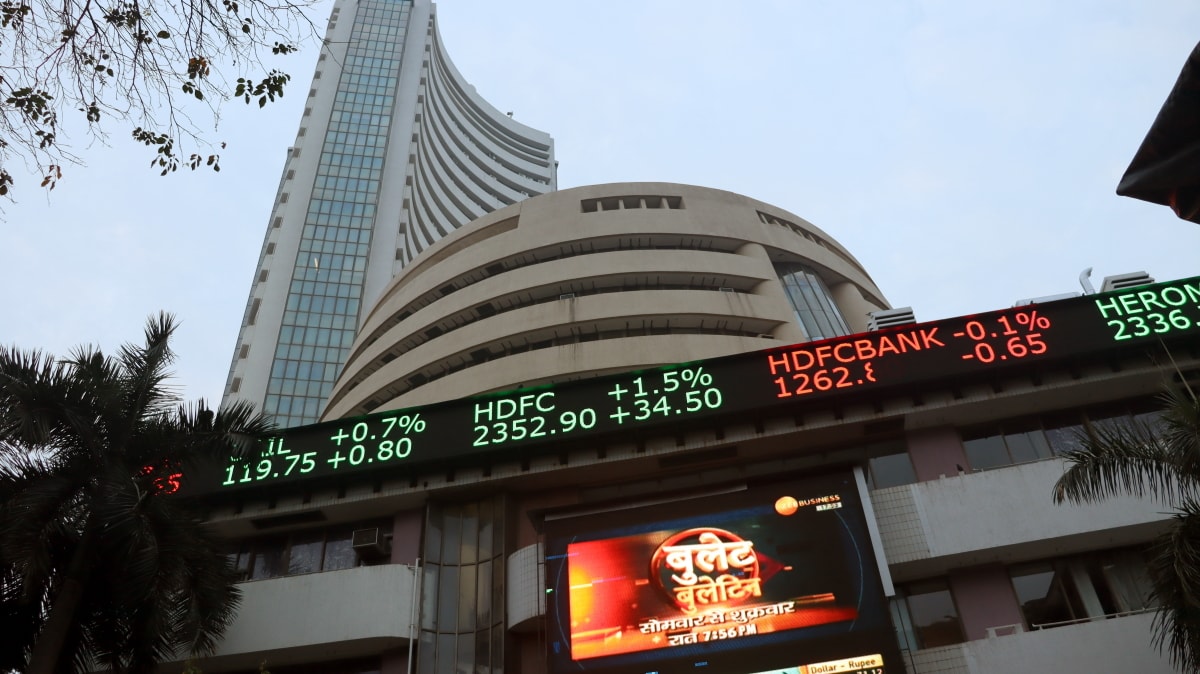India’s $3.1 tn stock market ranks among the best-performing equity markets globally this year. Benchmark equity indices out of India have been scaling new highs since early August, registering the best performance in over 15 years.
Chinese equities, on the contrary, have been on a downtrend. As of 21 September, Sensex has risen 22% since the beginning of the year, while the Chinese Shanghai composite index has merely risen by 4.06%.
Not only that, the Indian benchmarks hit fresh all-time highs by early September. Even in August, India’s indices Sensex and Nifty 50 rose the most globally, by 9.4% and 8.7% respectively. Meanwhile, the Chinese Shanghai composite index was up by 4.3% in the same period.
As per analysts, Indian markets have been benefitting from the fall of Chinese equities amid continuous China’s regulatory crackdowns. This recent wobble in Chinese equities has led global investors and analysts to take out funds from China and deploy investments into other emerging markets like India.
Is India the new China?
India has recorded strong macro data and a faster than expected recovery, despite the onslaught of the second virus wave, that has supported equity markets. Contrary to the recent rise in the Indian equity market, key stock indexes out of China are trading nearly to the brink of a bear market. Attempts by Chinese authorities to ease market fears persist to fail, as the losses have been triggered not only in Chinese listed securities but also in most Asian countries.
Furthermore, new Beijing’s regulatory interventions and worries over Chinese property developers and debt have led money to flee from the world’s largest market this year, on the backdrop of the underperformance of Chinese stocks. This has turned out to be a long-term positive for the Indian markets.
On the other hand, India has received the highest ever Foreign Direct Investment (FDI) inflows in 2020-21, with Foreign Portfolio Investors (FPIs) remaining as net buyers in Indian markets till September. Since the start of 2021, overseas inflows into the Indian market is one of the highest recorded among the emerging markets, making India the biggest recipient in the region outside of China.
According to Shibani Sircar Kurian, Senior EVP & Head- Equity Research, Kotak Mahindra Asset Management Company, India is rising on the global investment landscape with a pivot to manufacturing and exports. According to her, investors are likely to bet on the recovery of the Indian economy supported by central bank stimulus, government reforms and pace up in vaccination trends. She added that the Covid-linked disruption of global manufacturing and shipping has served to emphasize the need to reduce dependency on China.
As of 15 September, the Indian equity market is up more than 100% since it’s low in early April 2020, Kotak’s analyst said. Since July 1, S&P BSE Sensex rose 6.9%, compared to a 6.8% decline in most emerging market equities and a 3.2% rise in developed market stocks.
The recent fall in emerging markets comes amid Beijing’s constant regulatory crackdowns as Chinese equities make up for over one-third of MSCI and FTSE Russell’s flagship indices for emerging markets.
Correlation in Indian and Chinese equity market
Explaining the contrast in fortunes of the largest and fourth-largest stock markets, the equity research analyst from Kotak stated that major indices of India and China have often moved in opposite directions. According to Kurian, India’s major index is dominated by companies that either cater to domestic consumers or operate in export sectors like software, well away from China’s areas of strength.
Therefore, Indian equities are fairly in low correlation to Chinese equities among the other Asian economies, like Taiwan and South Korea that are closely linked to China’s movements.
“The contrast between the two countries is largely due to the regulatory crackdown on big technology companies by the Chinese government. Indian markets have on the other seen improvement in terms of sentiment, flows and fundamentals,” she added.
How should investors bet?
With Indian equity markets showing strong resilience of a bull market, many analysts suggest that Asia’s third-largest economy will be an important and competitive investment destination for overseas investors.
“Global companies are actively de-risking their businesses from China’s dominance and India is best placed to tap this opportunity given recent reforms of ease of doing business, low cost of labours and humongous domestic consumption market. Of late, the Indian government has acquired a strategic focus on export-led growth. Its production-linked incentive scheme, instituted for sectors like electronics manufacturing, food processing, automobile components and speciality steel, has gained traction over the past year. It was designed to boost domestic manufacturing,” Kurian from Kotak said.
According to the Standard Chartered report published in September, the Indian economy is on a stronger footing, given robust external parameters with lower current account deficit and record high FX reserves, a less alarming inflation scenario and a more robust GDP growth outlook.
“Within equities, diversified allocation is preferred as relative earnings and valuations of mid-cap and small-cap equities to large-cap equities are trading close to par. We prefer cyclical and value-style equities as the recovery broadens,” the report added later.
On a different note, UBS last year stated that the Indian economy will continue to grow in the years ahead, but it will take a long time for it to match China’s size today, which is currently five times bigger. According to the global financial services firm, China’s economy would have to crash and India’s growth at over 10% a year for several decades for India to catch up and neither is likely.
In terms of investment, UBS added that “India is one of the last large population markets that is waiting to be truly discovered. Restrictions, especially for non-institutional investors, make it difficult, but not impossible, to access the market. Indeed, it will take more effort for investors to capture opportunities in India than it would in other, more developed markets.”










 Australia
Australia China
China India
India Indonesia
Indonesia Japan
Japan Malaysia
Malaysia Philippines
Philippines Singapore
Singapore South Korea
South Korea Taiwan
Taiwan Thailand
Thailand Vietnam
Vietnam Germany
Germany Hong Kong
Hong Kong USA
USA Switzerland
Switzerland Singapore
Singapore
 United Kingdom
United Kingdom








